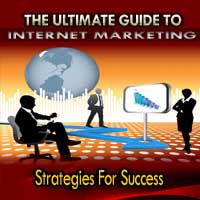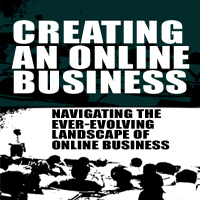



In the dynamic world of online business, the potential of affiliate marketing is often underestimated. This powerful and flexible marketing strategy has transformed countless individuals and businesses by unlocking a plethora of opportunities for revenue generation and growth. In this article, we'll delve into the vast potential of affiliate marketing and why it continues to be a game-changer in the digital realm.
A World Of Opportunities
Affiliate marketing offers a world of opportunities for those willing to explore its potential. Here's why it stands out as a remarkable avenue for individuals and businesses alike:
Low Barrier To Entry: Unlike many other business models, affiliate marketing boasts a remarkably low barrier to entry. You don't need a significant upfront investment, a physical storefront, or a vast inventory. All it takes is an internet connection and a strong desire to promote products or services.
Flexibility And Autonomy: Affiliate marketers enjoy unparalleled flexibility in their work. They have the autonomy to choose the products or services they wish to promote, aligning their efforts with their interests and passions. This not only makes the work enjoyable but also boosts motivation and engagement.
Passive Income Potential: The potential for passive income is one of the most appealing aspects of affiliate marketing. Once your marketing systems are set up and your campaigns are live, you can continue to earn commissions without constant, active involvement. This means you can earn money while you sleep, travel, or focus on other pursuits.
Diverse Product And Service Categories: The affiliate marketing landscape is incredibly diverse. You can find affiliate programs in almost any niche or industry. From physical products like gadgets and fashion to digital products like software and e-books, and even various services, the range of offerings available for promotion is vast.
No Inventory Or Customer Support: One of the most significant advantages of affiliate marketing is that you don't have to handle product inventory, shipping, or customer support. These responsibilities rest with the businesses you're promoting for. As an affiliate, your primary focus is on marketing and driving traffic.
How To Unleash Affiliate Potential
To tap into the full potential of affiliate marketing, consider the following strategies:
Choose Your Niche Wisely: Start by selecting a niche or industry that you are passionate about and that aligns with your expertise or interests. A niche you're enthusiastic about is more likely to keep you engaged and motivated.
Quality Over Quantity: Focus on the quality of your content and promotional efforts rather than the quantity. High-quality, relevant content will attract and retain a more engaged audience, which is more likely to convert into customers.
Diversify Your Marketing Channels: Utilize multiple marketing channels to reach a broader audience. This may include blogging, social media, email marketing, and pay-per-click advertising. Diversification reduces your reliance on a single platform and expands your reach.
Build Trust And Credibility: Trust is crucial in affiliate marketing. Build trust with your audience by providing honest, valuable information, and recommendations. This trust will drive higher conversion rates and long-term success.
The potential of affiliate marketing is boundless, offering a path to financial independence, flexibility, and the ability to align your work with your passions. With low entry barriers, diverse affiliate programs, and the promise of passive income, affiliate marketing remains a promising endeavor for individuals and businesses looking to thrive in the digital age. By adopting the right strategies and maintaining transparency and trust with your audience, you can unlock the vast potential of affiliate marketing and realize your financial aspirations.
 3. Personalization Matters: Personalizing your offers to the individual preferences and behaviors of potential customers is a powerful tool. Leverage data and analytics to segment your audience and deliver offers that feel tailored to their needs. Personalization can significantly boost engagement and conversions.
3. Personalization Matters: Personalizing your offers to the individual preferences and behaviors of potential customers is a powerful tool. Leverage data and analytics to segment your audience and deliver offers that feel tailored to their needs. Personalization can significantly boost engagement and conversions.
4. Create A Sense Of Urgency: A time-sensitive offer can create a sense of urgency that encourages potential customers to act promptly. Limited-time deals, exclusive discounts, and countdowns can push them to make a decision. Just ensure that you maintain transparency and fulfill the promises you make.
5. Visual Appeal And Design: The visual presentation of your offer is essential. Invest in high-quality images, graphics, and design. A visually captivating offer can immediately capture potential customers' attention and make a positive first impression.
6. Clear And Compelling Call To Action (CTA): Your offer should include a clear and compelling call to action. The CTA should use action-oriented language and stand out visually, often with the use of contrasting colors. It should prompt potential customers to take the desired action, whether it's making a purchase, signing up, or contacting your business.
7. Test And Optimize: Captivating potential customers is an ongoing process. A/B test different elements of your offers to understand what works best. Experiment with pricing strategies, offer variations, and messaging to determine what resonates most with your audience. Regular optimization based on data is key to success.


 3. Bundle And Upsell: Bundle offers and upselling are effective strategies to increase the average transaction value. By combining related products or services into packages or suggesting upgrades, businesses can enhance the overall customer experience and boost revenue.
3. Bundle And Upsell: Bundle offers and upselling are effective strategies to increase the average transaction value. By combining related products or services into packages or suggesting upgrades, businesses can enhance the overall customer experience and boost revenue.
4. Personalization For Targeted Offers: Personalized offers cater to the individual preferences and behaviors of customers. By leveraging data and customer insights, businesses can deliver tailored offers that resonate with specific segments of their audience, increasing conversion rates and customer satisfaction.
5. Loyalty Programs: Loyalty programs offer incentives to repeat customers. By rewarding loyal patrons with discounts, exclusive access, or points-based rewards, businesses can encourage customer retention and repeat business.
6. Limited-Time Promotions: Creating a sense of urgency is a compelling strategy. Limited-time offers, flash sales, and time-bound discounts prompt customers to act quickly. The fear of missing out (FOMO) can be a potent motivator in a competitive market.
7. Referral And Affiliate Programs: Word-of-mouth marketing is powerful. Offer referral and affiliate programs that incentivize customers and partners to promote your products or services. This not only expands your reach but also builds trust through recommendations.
8. Customer Experience Enhancement: Offer strategies can also extend to the overall customer experience. Providing exceptional customer service, hassle-free returns, and speedy shipping can be differentiating factors that set your business apart.
9. Product Launch And Teaser Campaigns: Creating excitement around new products or services can be a strategic offer approach. Teaser campaigns and exclusive access to pre-launch offerings can generate anticipation and interest.
10. Tiered Offers: Tiered pricing and offers provide customers with options. By presenting a range of choices, from basic to premium, businesses can cater to different customer segments and maximize revenue.
 2. Differentiate Your Offer: In a crowded marketplace, your offer needs to stand out. Differentiation is key. Identify what makes your product or service unique and build your offer around that. Highlight the benefits that your competitors can't match, whether it's quality, price, convenience, or customer support.
2. Differentiate Your Offer: In a crowded marketplace, your offer needs to stand out. Differentiation is key. Identify what makes your product or service unique and build your offer around that. Highlight the benefits that your competitors can't match, whether it's quality, price, convenience, or customer support.
3. Offer Personalization: Personalization is a powerful strategy for crafting winning offers. Tailor your offers to match the specific preferences and behaviors of individual customers. Use data and analytics to segment your audience and provide them with offers that feel customized to their needs. This personal touch can significantly boost conversion rates.
4. Create A Sense Of Urgency: Scarcity and urgency are powerful motivators. Limited-time offers, exclusive deals, and countdowns can create a sense of urgency that encourages potential customers to act quickly. Just be sure to deliver on your promises and not create false urgency, as this can harm your brand's reputation.
5. Test And Iterate: Crafting winning offers is not a one-time task. It's an ongoing process. Regularly A/B test your offers to understand what works best. Experiment with different pricing strategies, discounts, and bonus items to see what resonates with your audience. Use the data from these tests to refine and optimize your offers.
6. Leverage Social Proof: Showcasing positive reviews, testimonials, and endorsements can boost the credibility of your offers. People are more likely to trust and act on an offer when they see that others have benefited from it. Encourage satisfied customers to share their experiences, and prominently feature this social proof in your marketing materials.
7. Offer Value Beyond Price: While discounts and low prices can be enticing, don't forget to emphasize the value of what you're offering. Highlight the benefits and outcomes that customers will experience when they take advantage of your offer. This can make your offer more compelling even if it's not the cheapest.
8. Provide Clear And Transparent Terms: Clarity and transparency are crucial for building trust. Ensure that your offer's terms and conditions are easy to understand, and that there are no hidden fees or surprises.






 3. Social Proof And Authority: The psychology of persuasion tells us that people are more likely to act when they see that others have already done so. Demonstrating social proof, such as showcasing customer reviews, testimonials, or displaying trusted industry authority endorsements, can make your offer more compelling.
3. Social Proof And Authority: The psychology of persuasion tells us that people are more likely to act when they see that others have already done so. Demonstrating social proof, such as showcasing customer reviews, testimonials, or displaying trusted industry authority endorsements, can make your offer more compelling.
4. The Power Of Personalization: Tailoring your offer to individual preferences and needs is a psychological strategy that plays a pivotal role in capturing attention. Personalization makes potential customers feel seen and understood, leading to a stronger emotional connection with your offer.
5. Anchoring And Framing: The way an offer is presented can significantly impact how it's perceived. Anchoring refers to the idea that people tend to rely heavily on the first piece of information they receive when making decisions. Framing involves how the same information can be presented positively or negatively. For instance, positioning a discount as "Save $50" versus "50% off" can yield different responses.
6. Emotional Appeal: Human decision-making is heavily influenced by emotions. Creating offers that evoke positive emotions, such as joy, excitement, or satisfaction, can make them more appealing. On the other hand, offers that alleviate negative emotions, such as fear or anxiety, can also be compelling.
The Impact Of Technological Advancements
 Biotechnology And Healthcare: Advances in biotechnology have led to groundbreaking discoveries in gene editing, regenerative medicine, and precision diagnostics. These technologies are poised to revolutionize healthcare, with the potential to cure genetic diseases, develop personalized treatment plans, and extend human life.
Biotechnology And Healthcare: Advances in biotechnology have led to groundbreaking discoveries in gene editing, regenerative medicine, and precision diagnostics. These technologies are poised to revolutionize healthcare, with the potential to cure genetic diseases, develop personalized treatment plans, and extend human life.
Space Exploration: The private sector has become a driving force in space exploration, with companies like SpaceX and Blue Origin pushing the boundaries of what's possible. This has the potential to reduce the cost of launching payloads into space, making it more accessible for scientific research, satellite deployment, and potentially even space tourism.
Blockchain Technology: Blockchain, the underlying technology behind cryptocurrencies like Bitcoin, is now finding applications far beyond digital currencies. It's being used for secure supply chain management, transparent voting systems, and fraud-proof legal contracts, promising to revolutionize various industries.
Advanced Robotics: Robotics is becoming increasingly sophisticated, with machines capable of more delicate and precise tasks. Robots are used in healthcare for surgery and patient care, in manufacturing for automation, and in exploration for tasks too dangerous for humans.
Cybersecurity And Data Protection: As technology advances, so do the threats to data and privacy. Cybersecurity has become a growing concern, driving the development of cutting-edge solutions to protect sensitive information from cyberattacks and data breaches.
Sustainable Agriculture: Technological advancements in agriculture, including precision farming and automated machinery, are improving crop yields while reducing environmental impact. This is essential for addressing food security and sustainability challenges.
These technological advancements are not isolated; they often intersect and create synergies that amplify their impact. For example, AI and robotics can enhance healthcare and manufacturing, while renewable energy can power the servers that drive AI and blockchain applications.